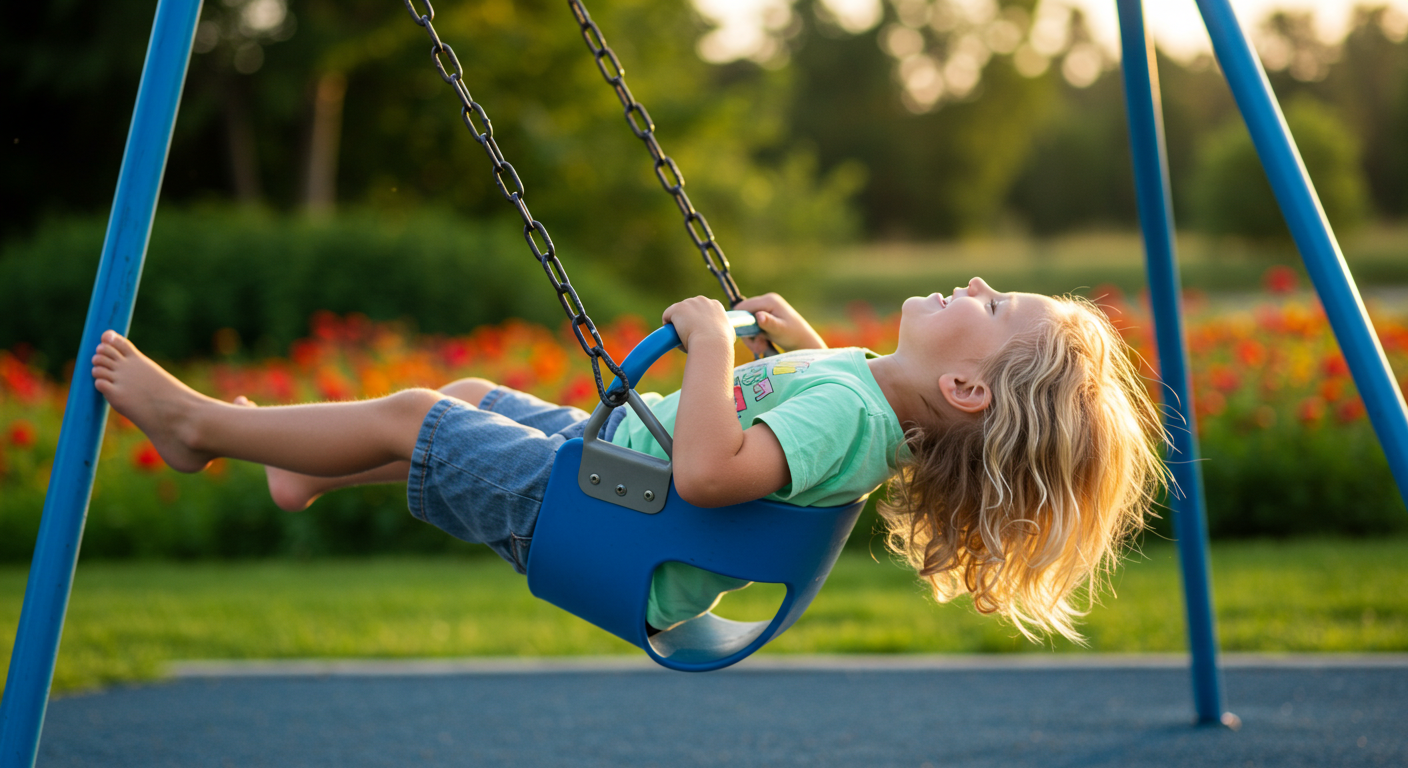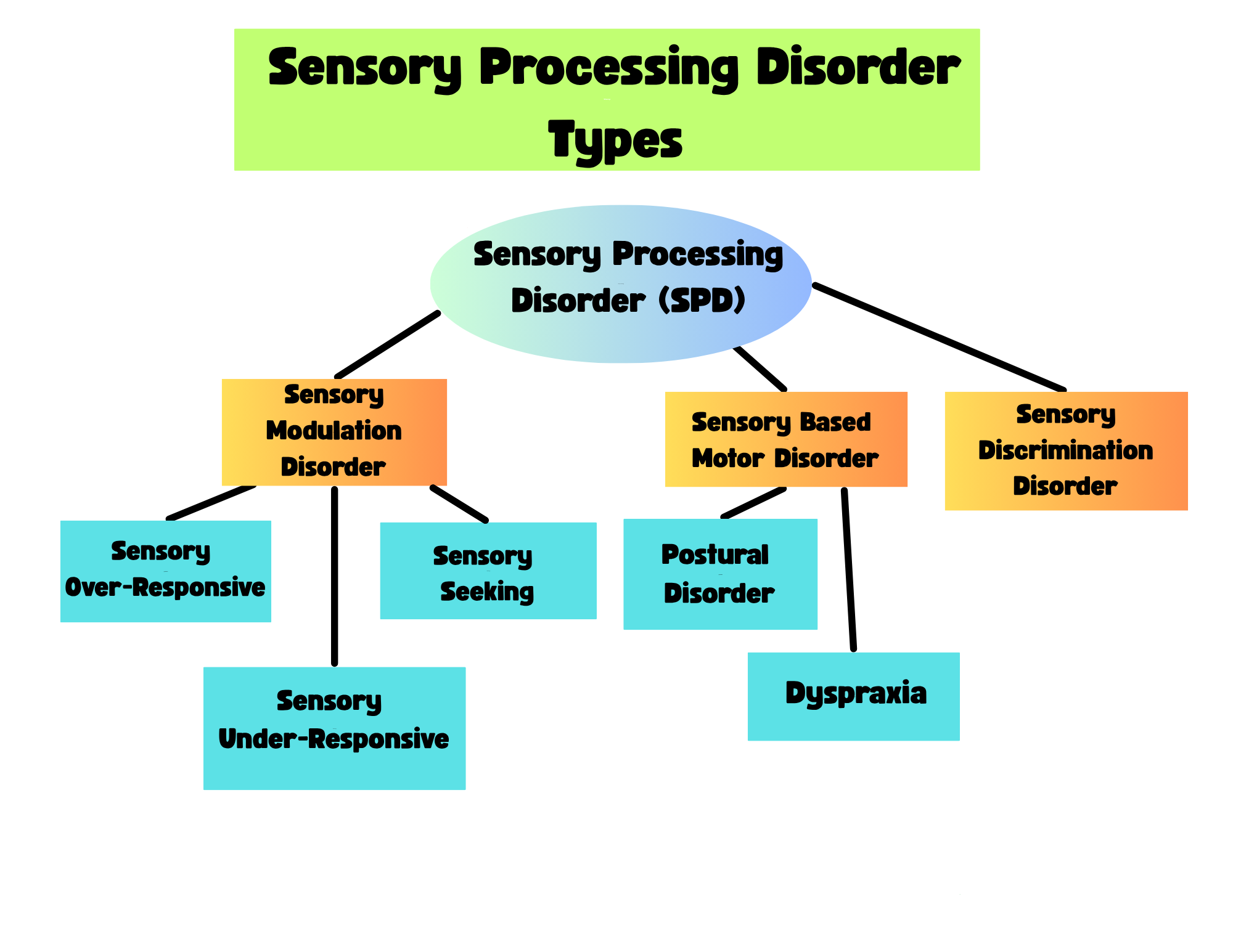Sensory Processing Disorder (SPD):
Symptoms, Types, and Treatment in Children

Sensory Processing Disorder (SPD) is a neurological condition that affects how the brain interprets and responds to sensory input from the environment. Children with SPD have difficulty processing and integrating sensory information, which can significantly impact daily functioning, behavior, and development. SPD was previously known as Sensory Integration Dysfunction and is now understood to include a wide spectrum of sensory challenges—not just one specific disorder.
SPD often overlaps or is mistaken for other conditions like ADHD, mild autism, or what used to be referred to as Asperger syndrome, but it requires distinct diagnostic and treatment approaches. A correct diagnosis is essential to ensure effective interventions.
Types of Sensory Processing Disorder
SPD is categorized into several types and subtypes based on how a child responds to sensory input. Below is an overview of the main categories:

1. Sensory Modulation Disorder
This type involves difficulty regulating responses to sensory input. Affected children may show responses that are:
- Over-responsive (hypersensitive)
- Under-responsive (hyposensitive)
- Sensory seeking (craving stimulation)
These responses are typically frequent, intense, and prolonged. Children might avoid certain sensations or actively seek them in unusual ways.
This subtype is often confused with ADHD due to shared traits like hyperactivity or impulsivity. However, SPD and ADHD have different causes and require different treatments. Occupational therapists trained in sensory integration can distinguish between the two and develop a tailored plan.
Common Symptoms of Sensory Modulation Disorder in Children
Sensory Processing Disorder symptoms can vary widely depending on the type and sensory systems involved. A child may have challenges with:
- Vestibular input (balance and movement)
- Tactile input (touch)
- Auditory processing (hearing)
- Olfactory input (smell)
- Proprioception (body awareness)
Because each child is different, one child may display vestibular dysfunction while another shows tactile defensiveness. This variation can make recognizing SPD difficult for parents and caregivers.
👉 Click here to view a full list of sensory processing disorder symptoms.
2. Sensory-Based Motor Disorder (SBMD)
Sensory-Based Motor Disorder is a type of Sensory Processing Disorder (SPD) that affects a child’s ability to plan and execute physical movements effectively. It stems from difficulties in processing and integrating sensory information needed for motor coordination and control. Children with SBMD may struggle with balance, posture, and motor planning—a skill known as praxis.
Common Signs of SBMD:
- Clumsiness or frequent tripping/falling
- Difficulty with fine motor tasks (e.g., using utensils, writing, buttoning clothes)
- Trouble with gross motor activities (e.g., riding a bike, catching a ball)
- Poor posture or low muscle tone
- Avoidance of physical play or sports
Treatment for SBMD:
Intervention typically includes occupational therapy with a sensory integration approach, focused on improving body awareness, strength, coordination, and motor planning. Activities are designed to gradually build confidence and physical competence in a fun, structured environment.
3. Sensory Discrimination Disorder (SDD)
Sensory Discrimination Disorder refers to difficulty distinguishing between similar sensations within a sensory system. Children with SDD may be able to detect sensory input but struggle to interpret or respond accurately, which can impact both learning and behavior.
Areas Affected by Sensory Discrimination Issues:
- Tactile discrimination: Trouble distinguishing textures, pressure, or location of touch
- Auditory discrimination: Difficulty telling similar sounds apart (e.g., "cat" vs. "cap")
- Visual discrimination: Problems identifying differences in shapes, letters, or symbols
- Proprioceptive discrimination: Difficulty sensing body position, force, or movement
- Vestibular discrimination: Uncertainty about movement direction or speed
Treatment for SDD:
An occupational therapist can help the child improve sensory interpretation through targeted sensory activities, often using repetition and structured practice to enhance the brain’s ability to differentiate sensory input and respond more accurately. This is typically integrated into a broader sensory diet plan based on the child’s unique needs.
Effective Treatment for Sensory Processing Disorder
Early intervention is key to managing SPD. Occupational therapy with a sensory integration approach is the most common and effective treatment. SPD treatment interventions may include:
- Sensory Diets: Customized activities designed to meet a child's sensory needs.
- Integrated Listening: Uses music and sound therapy to improve auditory processing.
- Wilbarger Brushing Protocol: A proprioceptive technique used to calm and organize the nervous system.
- Tactile Defensiveness Treatment: A type of sensory integration therapy, including activities like deep pressure, brushing protocols, and exposure to textured materials, guided by an occupational therapist to help the child gradually tolerate and respond appropriately to touch.
Real-Life Story
When my oldest son was 3 years old, he demonstrated a lot of sensory seeking behavior. To be honest it was very exhausting because he had terrible sleep problems in which he stopped napping at 2 years old! We couldn't take him anywhere without him running in circles, touching anything and everything he could get his hands on, and he struggled to follow instructions. In addition, his speech was delayed and he was difficult to understand. Thankfully, an occupational therapist experienced with sensory integration just so happen to observe him one day at our church. She helped us to implement the Wilbarger brushing protocol and therapeutic listening, which significantly improved his ability to focus and sleep. Over time, his speech and academic performance improved dramatically. Today, he thrives as an adult without any noticeable symptoms other than he says he still can never take a nap during the day, which isn't always a bad thing!
Auditory Processing Disorder (APD) and SPD
While Auditory Processing Disorder (APD) is considered a separate diagnosis, it is closely related to SPD. APD specifically affects how the brain processes auditory information but often coexists with other sensory challenges. Children with APD may struggle to understand spoken instructions, especially in noisy environments.
What Causes Sensory Processing Disorder?
The exact causes of SPD are still being studied, but potential contributing factors include:
- Genetic predisposition
- Prenatal factors: exposure to toxins, stress, or illness
- Birth complications: premature birth, low birth weight, or trauma
- Postnatal factors: environmental toxins, lack of stimulation, or prolonged hospital stays
Regardless of the cause, early detection and appropriate treatment make a profound difference. In my son's case, he was born via emergency c-section due to his heart rate dropping. When he was born he had a cephalohematoma on his head from presenting wrong in the birth canal. All of this combined may have caused him to have the sensory issues he demonstrated. He also really didn't sleep from day one of coming home. I recall my husband holding him all night so I could sleep because he would cry if he wasn't being held.
Next Steps if You Suspect SPD
If your child shows signs of sensory processing disorder:
- Review our comprehensive list of SPD symptoms.
- Consult your pediatrician for a referral to an occupational therapist.
- Explore therapy options and educational resources.
Additional Resources on Sensory Processing Issues
References
1. Kranowitz, C. S. (2005). The Out-of-Sync Child: Recognizing and Coping with Sensory Processing Disorders. New York, NY: Penguin Group.